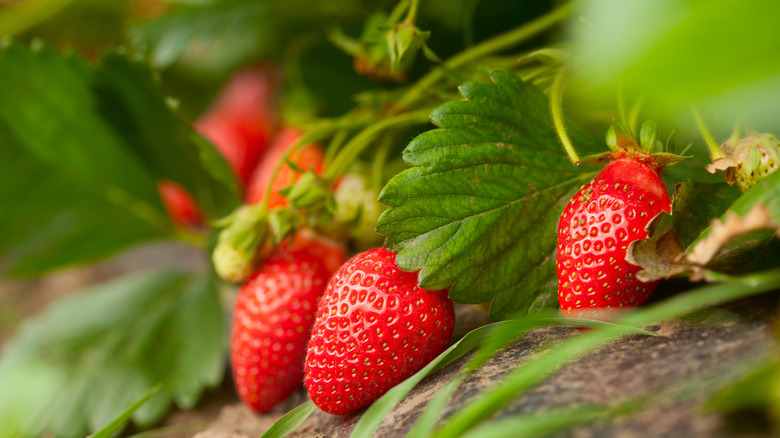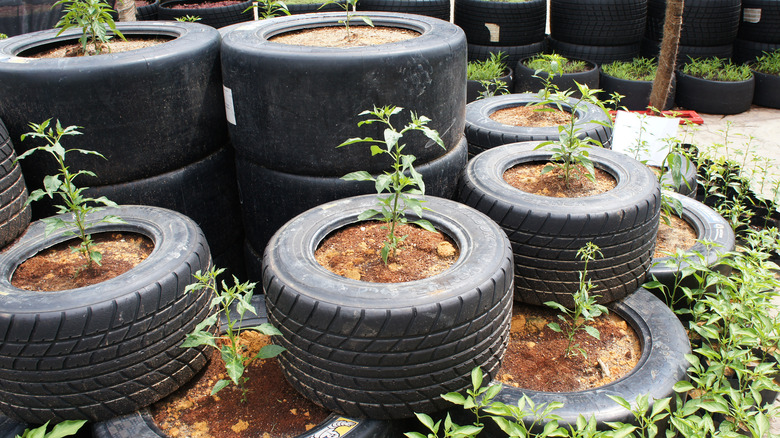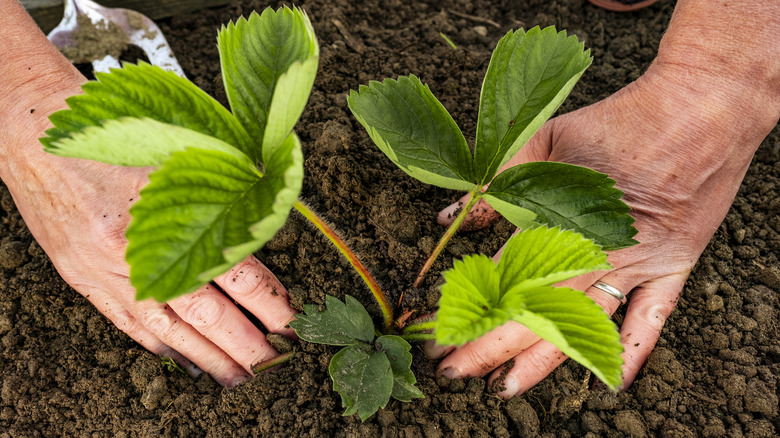Grow Beautiful Strawberries By Using Old Tires
Satisfaction is harvesting ripe strawberries from your garden on a warm summer's day, and fortunately, growing your own strawberries can be quite easy. The delicious summer berries can flourish whether you have an expansive backyard or a small container garden. However, strawberry planters and raised beds can be pricey, sometimes costing $200 or more. A DIY approach is much more budget-friendly! While you can certainly build planters with slabs of wood and power tools, you don't need a workshop at your disposal to grow some strawberries. Instead, you can use just some old tires.
At first thought, some may be concerned about using tires for edible crops due to a risk of their chemicals and toxins being transferred. But tires take a long time to break down, and will really only leach chemicals when burned. Nevertheless, a tarp can be used to create a barrier between the plants and the rubber to ensure no traces are found on your vegetation if you want to be extra-cautious. Recycled tires make great planters thanks to their durability in all kinds of weather, and the compartmentalized spaces they provide are excellent for keeping out weeds.
Creating strawberry tire pyramids
The first step in creating a strawberry tire pyramid is to choose nine tires that are an appropriate size for your space. You'll also need to find a location for them that will get plenty of sunlight, as strawberries need at least six hours of sun each day, and you won't want to try to move your tires around after you begin. Next, arrange five tires in a tight circle and prepare your soil mix, combining three parts well-draining and acidic soil with one part compost. If you'd like to use a tarp to separate the berries from the actual tire, place it down before you add in the soil. Add enough soil to completely fill each opening, all the way up to the rim.
With the five-tire-base filled with soil, stack three tires on top in a triangle shape. Fill them up with soil just as before, then add your last tire on top of the triangle, also filling with soil. You should end up with a nicely stacked tire pyramid with staggered openings to plant strawberries in. Add a maximum of three strawberry plants to each tire to prevent overcrowding. After all your strawberries have been planted, water them well.
You can also plant strawberries in singular tires if you'd rather not stack them or only have a few at your disposal.
Tips for planting strawberries
While caring for and planting strawberries is reasonably straightforward, there are still some important tips to remember. Strawberries need lots of room to spread, which is why a spacious pyramid structure worksso well for them. Additionally, be sure you aren't planting strawberries in spots you've previously grown nightshades like tomatoes, peppers, potatoes, and eggplants. These crops can have a root fungus called verticillium, and strawberries are very susceptible to it.
Choosing the type of strawberries to grow and understanding the different variations between them will also be helpful. There are three types to choose from based on your preferences. June-bearing strawberries are perfect for those looking for a one-time harvest. They'll ripen in late spring and early summer and then be done for the season. Everbearing plants produce berries ready for picking throughout the growing season. Day-neutral varieties are popular for gardeners who don't have gardens with as much sunlight exposure, as these strawberries are the only ones not reliant on day length, and they are known to produce fruit into October.
If you are planting alpine strawberry seeds, it's best to sow them eight weeks before spring and slowly move them outside once they're 3 inches tall. When planting bare-root strawberries, soak the roots in water for a few hours before putting them into the ground.


